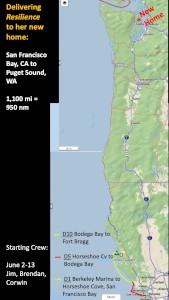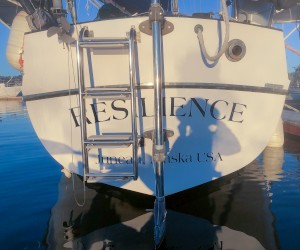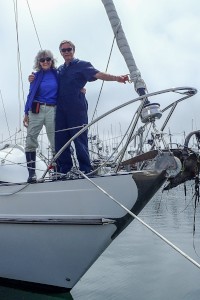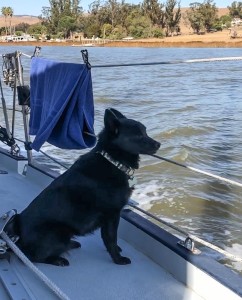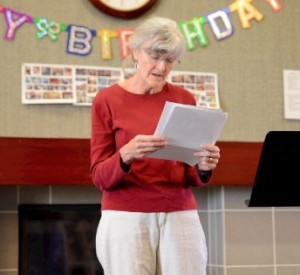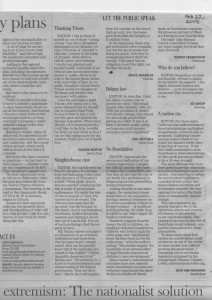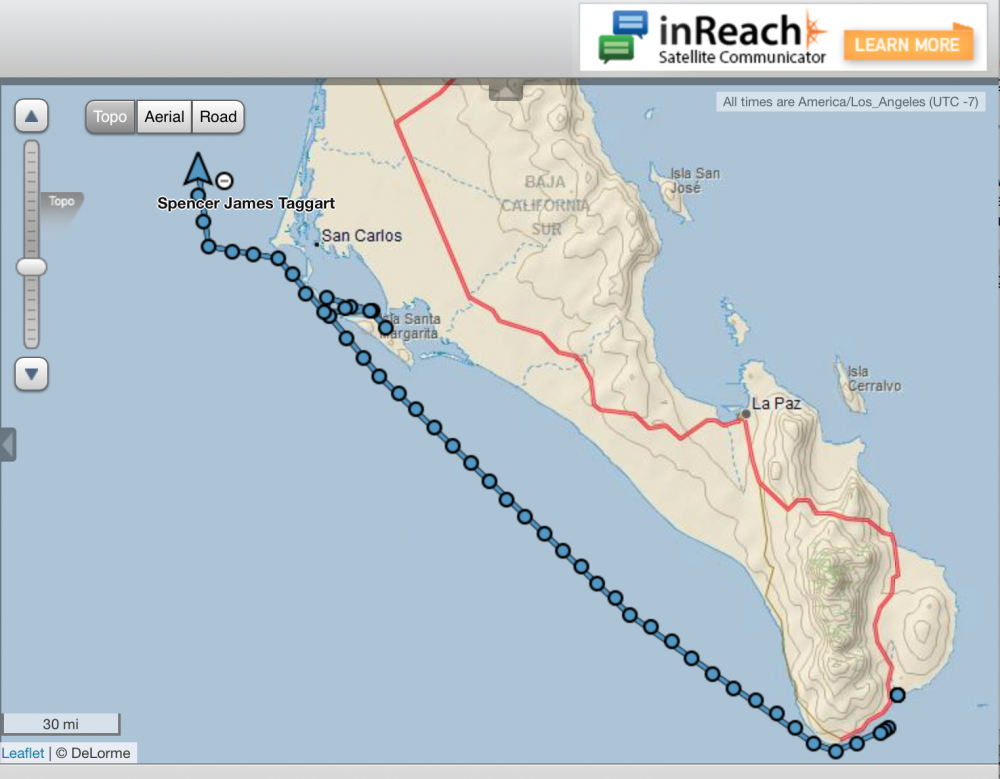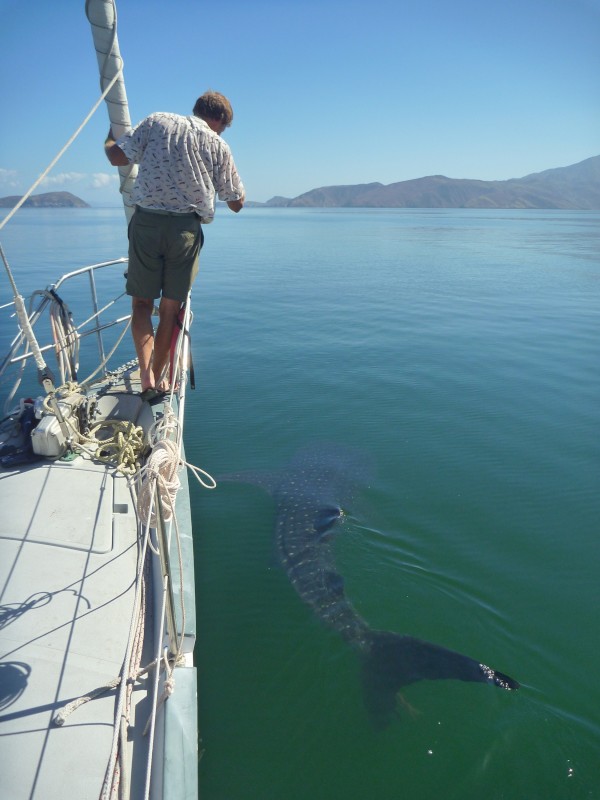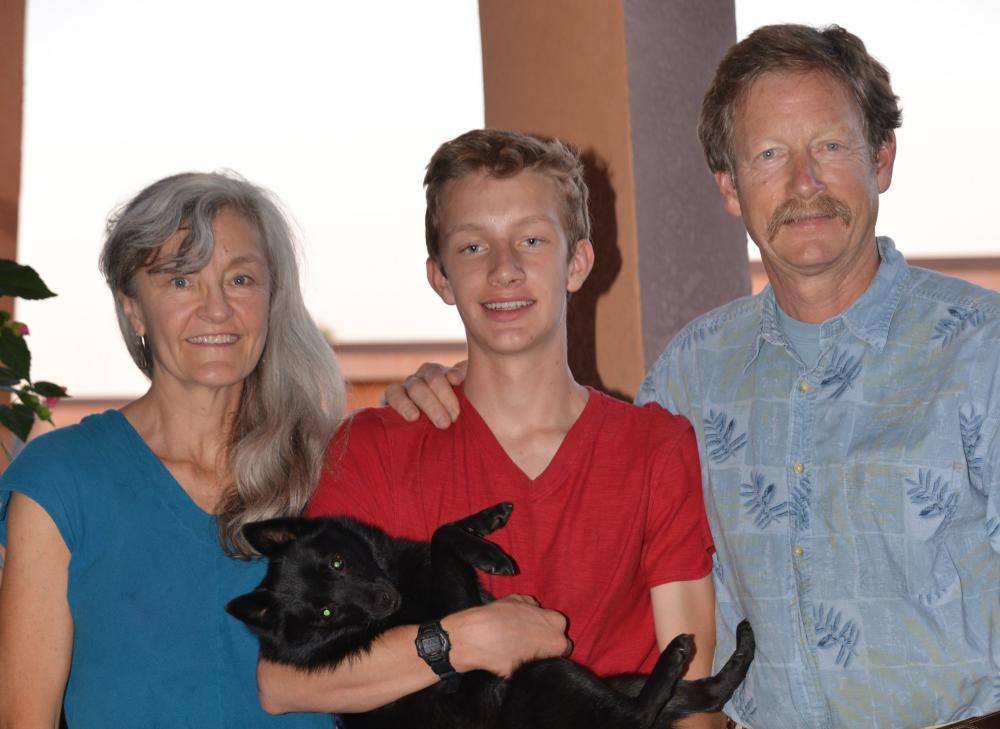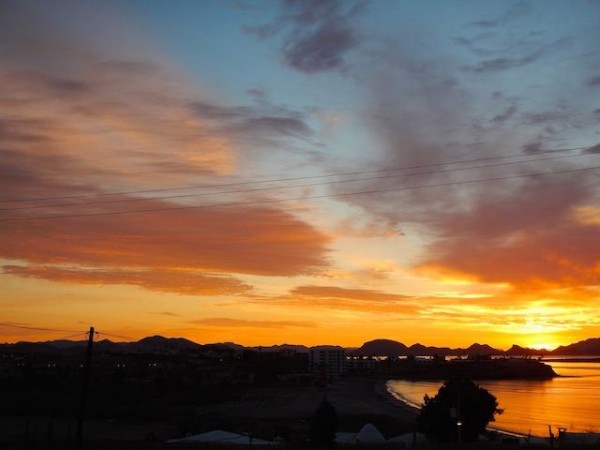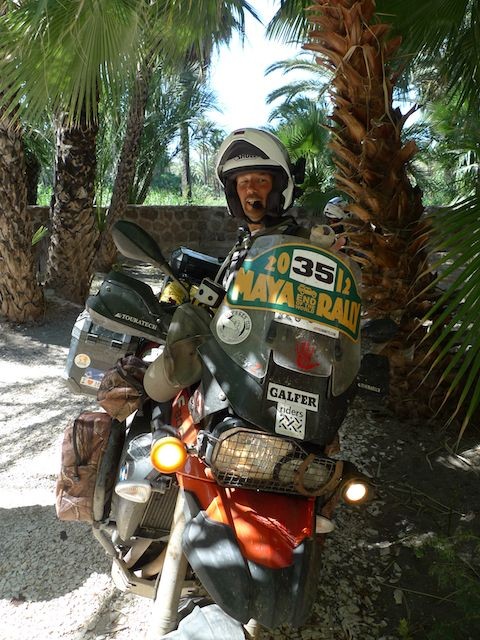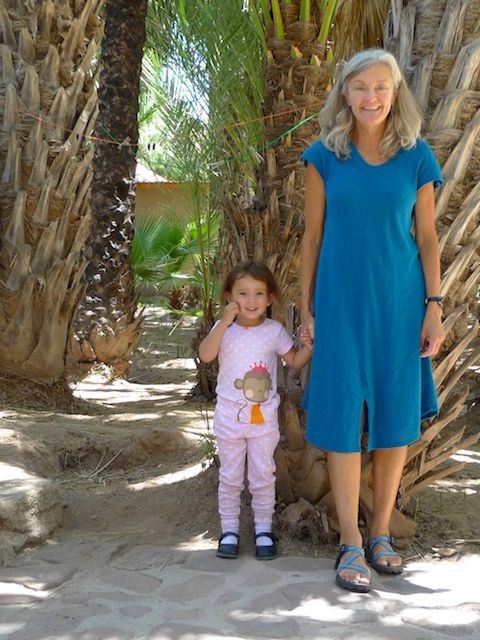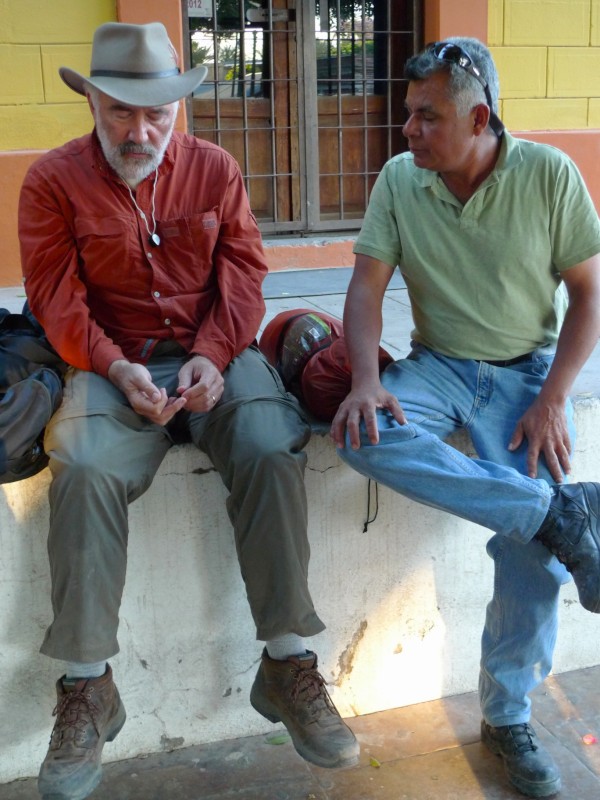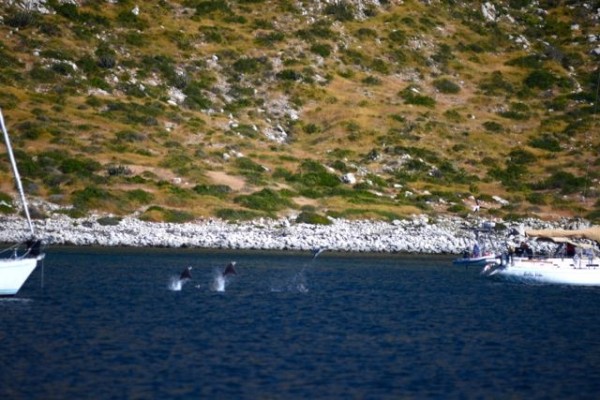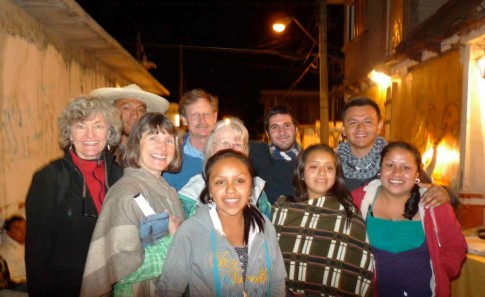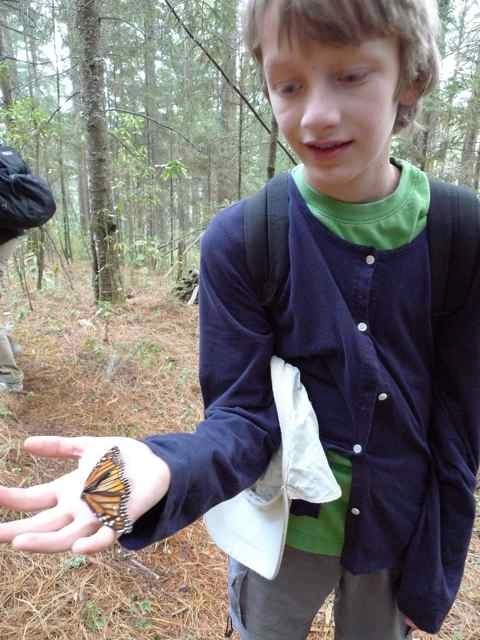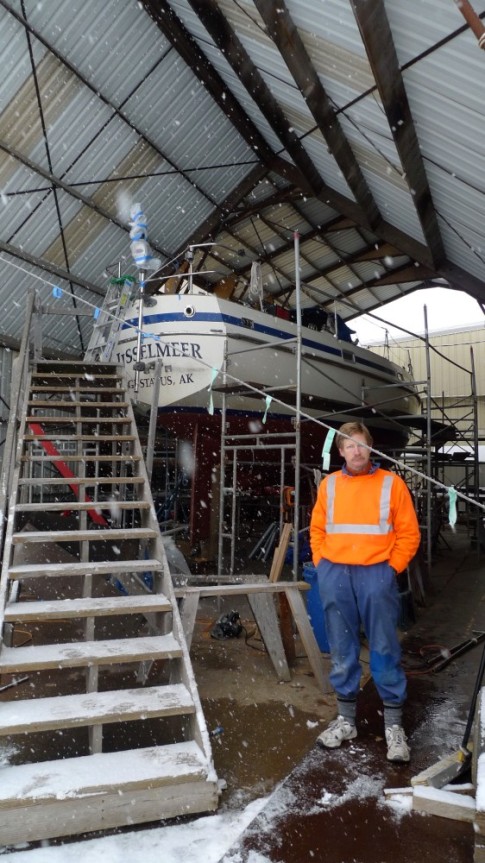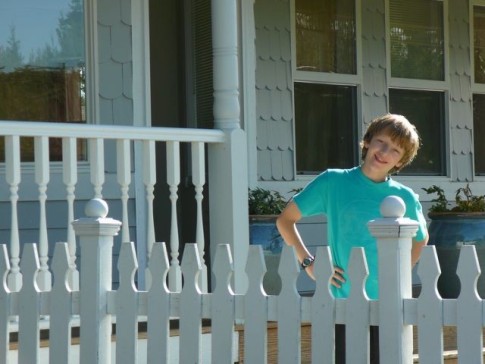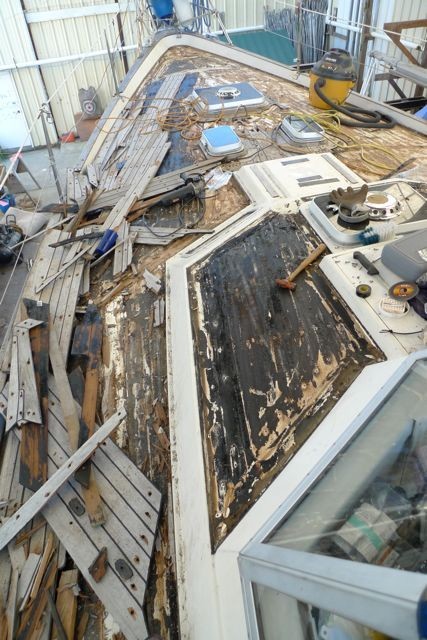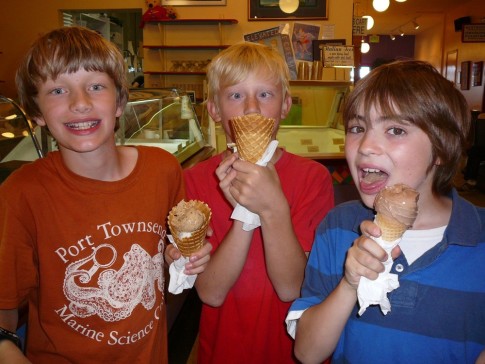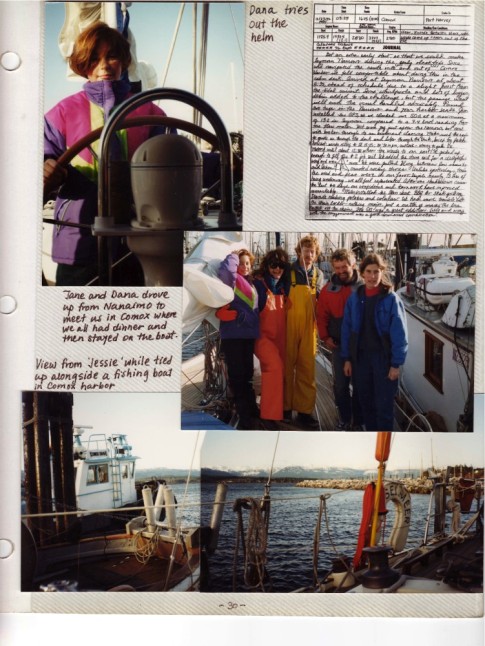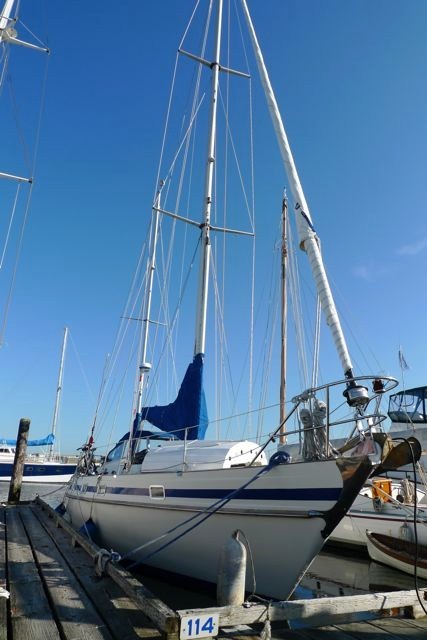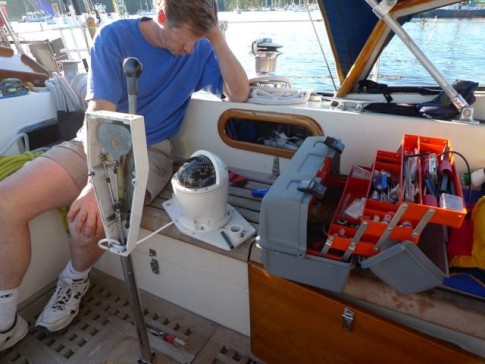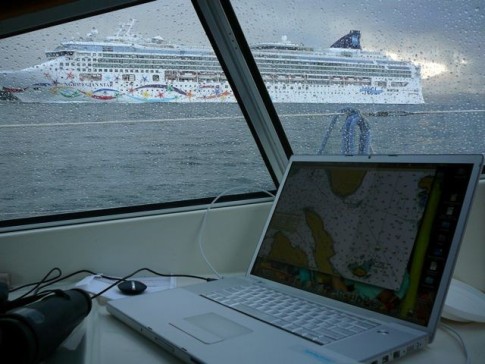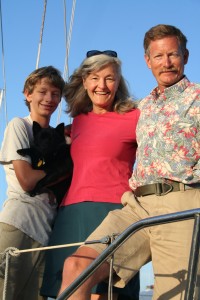MatTag Sailabout
Stories, photos, videos, and natural history updates from a family of three traveling from Alaska to Mexico on their sailboat with their Schipperke.
| Vessel Name: | RESILIENCE |
| Vessel Make/Model: | Contest 44 |
| Hailing Port: | Juneau, Alaska |
| Crew: | Beth Mathews, Jim and Glen Taggart |
| About: | |
| Extra: | 2016: Last year Jim delivered our sailboat from Baja to San Francisco Bay where Glen and I met him for the final leg up the Petaluma River to her new home. Resilience is now moored in the Petaluma Marina, only 20 miles south of our land home in Santa Rosa. |
| Social: |
22 June 2023 | Fort Bragg
Northbound Expedition: San Francisco Bay to Puget Sound
While I as on my book tour for Deep Waters*, Jim's been preparing Resilience for the big move north from San Francisco Bay aree to our new home in Puget Sound, Washington. For the first 2 weeks in June, Jim and crew--Brendan and Corwin--were geared up to start the journey from CA partway to her new [...]
04 December 2022 | Sonoma County
Shadow selfie with Resilience
Shadow selfie from our pedalboard, my favorite way to explore and go birding. Wishing you a fulfilling new year!
22 July 2020 | Bodega Bay, CA
Wilderness with a Big W
Day 40 aboard S/V Resilience*: Last Saturday (7/11), we ducked out under San Francisco's Golden Gate Bridge and motored north into 4-5 foot seas ~4 hours to the shelter of Drakes Bay, off Point Reyes National Seashore. The contrast with exploring the calm, warm-water Delta is striking. Everything [...]
18 December 2019 | Petaluma River
Edgy déjà vu: Petaluma River Retreat from Kincaid Fire Smoke
The Kincade fire began on October 23, 2019 and eventually consumed 78,000 acres--the largest wildfire Sonoma County has ever experienced. The first whiffs of smoke sparked an edgy déjà vu. At noon that day, Jim left our home in Santa Rosa for Petaluma to do some work on our sailboat, planning to return that evening. Although Santa Rosa did not experience an imminent threat, as the Air Quality Index rose, and high-wind forecasts persisted, we decided to shelter on Resilience and head down river to San Francisco. Leaving also meant we could offer our home to a family who had been evacuated from Windsor or Healdsburg, the heart of the Kincaid fire. This short video chronicles our oddly serene trip down the Petaluma River, through agricultural land and past a bucolic small town.
10 January 2016 | Santa Rosa, Ca
VIDEO: Beth reads "The Third Try," a story about releasing fishing line snarled around the prop
Beth Mathews is a marine biologist and writer who set out on a three-year sailing adventure from Alaska to Mexico with her ten-year-old son and husband, after her husband had a debilitating brainstem stroke. In this video, she reads about snorkeling beneath the boat, while in Mexico, to cut the boat's [...]
06 January 2016 | Petaluma Marina
Make a Difference in 2016
With the New Year's first week about to vaporize, I paused today while walking in downtown Petaluma (20 miles south of Santa Rosa) to think about what I had done last year that I wanted to do more of in 2016. The list started with "exercise." Then I remembered that in 2015, I submitted a letter to the [...]
Blackberries (Charleston Harbor, Coos Bay, Oregon)
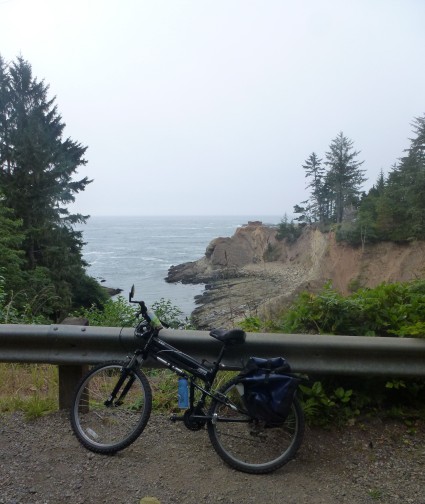
I am in the aft cabin downloading current versions of NOAA's electronic marine charts. We are in Charleston Harbor, at the mouth of Coos Bay, Oregon, for the third day. I head up top to address the barking.
A young dark-haired man in a black hooded sweatshirt smokes a hand-rolled cigarette on the dock. He is one of the crew from the adjacent tuna boat, an older 40-foot wooden commercial boat. He looks about 10 years older than Glen. The young man extends his non-smoking hand, knuckles up, toward Misty. Misty takes a step forward, nose stretched toward his knuckles.
The young man extends his other hand with the smoldering cigarette toward her, gently. "Wharuff!" Misty retreats one step with head cocked.
"I guess she has good taste," I say as I emerge from around the dodger, taking a chance with this nip of honesty.
"Yeah, these things are nasty." He looks down at the tiny nub of paper and tobacco in his curled fingers.
"Sorry about the barking," I offer, "She is still a puppy. We're trying to train her not to be so protective."
"It's okay. It's her job," he answers. "Will she get any bigger?"
"Not much. Maybe a pound more."
Misty steps warily toward him while he stands patiently, his non-smoking hand now extended. She approaches. He gently caresses her neck. He flicks the remaining bit of extinguished cigarette toward the water, but it lodges in a wood groove in the dock.
"Do you have a dog?" I ask.
"Yeah. Mine's a Labrador, red healer mix." He smiles and tells me more about his dog.
"My name's Beth," I say as I lean over the lifelines extending my right hand.
"Mine's Dillan," he answers, shaking my hand firmly.
"How far out do you go for tuna?" I ask.
"About 40, maybe 100, miles. It takes us about 8 or 10 hours to get out to the tuna. We run at 7 or 8 knots," He answers.
"How long do you stay out?"
Another older crewman with a black and gray beard and wearing a burnished ball cap steps out from the cabin.
Dillan says, "we have a freezer; we can stay out until the fuel runs out."
His buddy adds, "we stay out until the tobacco runs out." He leans out over the edge of the boat and spits into the narrow space of ocean held by yellowing fenders against the dock, sharing by example his preferred form of tobacco.
The other crewman asks me about the Hydrovane at Ijsselmeer's stern. I explain how it works while we are under sail to self-steer, and how Jim has it rigged to a small auto-tiller that tricks it into being a low energy auto-pilot. They both nod in appreciation and ask good questions.
"He has a double ender that we fish. It's called Ruby," offers Dillan. "It was built in 1918."
"Yeah, we're just crewing for tuna for our friend," adds the round-faced man with the pocket of chew under his lip.
"What kind of salmon do you usually catch?" I ask.
"Chinook," answers Dillan. "Sometimes we catch a coho, but we usually filet and release into a frying pan," he says, the slight smile flashes across his face again.
Two hours later, Jim returns from a long walk to the marine store and back. He asks Glen and me to join him in the cockpit. He has an idea he wants to share. While at a café, a young woman told Jim about Cape Arago and Sunset State Parks, coastal parks nearby. Jim offers to put our stowed bike back together so that I can ride out to see the Parks. He proposes that he and Glen will take Misty to the nearby beach while I ride.
Twice in the wee hours of the dark dawn we have tried to leave Charleston Harbor, only to be turned back by fog shrouding the narrow bar as large swell continues to hit the shore. We had crossed the Coos Bay bar and into Charleston Harbor at night in the fog, a nerve-fraying maneuver that required each of us to perform maximally. This is our least favorite harbor so far. Jim has found a silver lining.
As we are having this family conversation beneath a blue sky in our sailboat, I overhear Dillan behind me talking to the captain of their boat, a tall, reed-like man with a long, thinning beard who preached of Jesus to me minutes after they had docked and I said hello.
"He's at the bar getting hammered," Dillan says. I am simultaneously listening to Jim's proposal and this alter-world conversation. "He's already had three shots of ..."- I missed the detail here as the diesel of a passing fishing boat thrummed by. "He's sitting in a chair with a 'Mich' on his belly," Dillan finishes, excitement and disdain in his voice. I cannot hear the words spoken by the tuna captain, but sense that they are not favorable.
I notice Glen noticing the conversation 12 feet away, his eyes dart from his father's face - as Jim explains how we will explore beyond Charleston Harbor - to the scene behind me. Glen's education on this adventure extends beyond the homeschooling, sail training, and family living arenas we orchestrate. We cannot know how it will play out, but in that moment I decide that over-sheltering is a greater danger than tempered exposure.
---
During my bike ride along Oregon's rocky coast I pass lush Salal bushes, thick Equisetum, and wind-swept evergreens and inhale ocean scrubbed air. Across from a wide field crowned by five modest homes I stop to pick blackberries. A thick-necked black bull grazes in angled light. In the adjacent field a llama suns with legs folded and eyelids low.
Handful by black-purple handful, I fill the Ziploc bag. It strikes me that with some people, like blackberries, you have to reach carefully around the thorns to get to the fruit.
August 28, 2011
Charleston Harbor, Coos Bay to Brookings, Oregon
5:20 Depart from the Charleston Harbor dock. It is dark, but the fog has not yet settled and we do not hear wind whistling through distant rigging or brushing the landscape.
6:25 Ahead, a dusting of phalaropes lifts. First light brings relief.
"Akk-ak" calls of Common Murre chicks answered by "whee-ooh, whee-ooh", their father's "I'm here, I'm here," trills. The young of the year (YOY) pliummage is more evident here. More immature calls heard in the last hour than all the previous legs together. We must have sailed into a different fledging time zone.
8:10 I do the breakfast dishes with my left hip pressed against the counter, my right foot bracing against the boat's rolls.
9:15 Jim is at the helm and I am in the cockpit with him. My cell phone rings from down below. How can that be? We are 5 miles off shore. Low mountains patched by logging to bare tan lie to our east. No cities are visible to the north or south. I scramble below to catch the call before the final ring.
"Nora!" I say, as I receive the call and see my youngest sister's number on the display. I describe the setting and let her know how remarkable it is that her call got through. "Whoosh!" a dark falcate fin slices through the water 100 feet off our port bow. The high dolphin-like dorsal fin attached to a whales body tell me it is a Minke whale, the smallest of the balaenopterid family. This whale's largest cousin is the blue whale and its most well known and distant cousin is the humpback whale.
"A Minke whale just surfaced next to the boat," I tell Nora. The whale surfaces four more times and then disappears, easily hidden by the three and four foot swells. Unlike other balaenopterids, when Minke whales exhale there is rarely a visible blow, making sightings of this not rare species less likely than other less common species with exhalation plumes visible for miles.
12:13 Two Pacific white-sided dolphins surface 3 feet from our starboard side, then zip forward to bow ride.
"Glen! Dolphins!" He comes running. We watch them together for the four minutes they chose to share with us. We are in 1,387 ft of watrer.
12:45 Enter our SPOT GPS "All is Okay" way point.
12:50 Reef the main sail. The wind is picking up slightly. We are motor sailing. Adding the main sail makes the ride much smoother. Not quite enough wind to cut the engine without running into the darkness before reaching our next possible harbor. This is a cost of coastal hopping. We trade daylight running for less sailing.
1:15 Make tuna sandwiches with the canned albacore from Ken, the first fisherman who was next to us in Charleston Harbor, Coos Bay. After his first bite, Glen asks why we did not get more of this tuna.
"It was a gift from a thoughtful man," I answer. Ken's boat was replaced by the other commercial tuna boat (see Aug 28 entry) when he left that slip for a few hours to offload his week's catch.
1:30 A big set of waves, which hit from the side, knocks the remainder of Jim and Glen's lunches onto the cockpit sole.
1:40 We are passing the Rogue River. Earlier we decided to move further offshore to avoid the offshore rock piles. Good call.
EARLIER ENTRIES:
August 25, 2011
After a day that carried more manual labor than was satisfying or in accord with my 'plan', I listen to Coldplay's "Clocks" three times as I cook dinner. Reflecting on the day feels better than experiencing it did.
August 24, 2011
06:05 Leave the dock
I turn out all of the overhead lights, but switch the central light from white to red. It is dark and we will see better if we extinguish all white lights.
9:12 Running in fog with wide broadside swell.
Plaintiff whistles -- probably a Common Murres. We see small rafts of these black and white, elegant alcids. Many are pairs, one adult and one young bird. The adult, however, is usually the father not the mother.* A single large egg is laid on a crowded cliff face and incubated for 4 to 5 weeks. The chick needs about 5 fish each day; maintaining this calorie flow is an energy-demanding task for the parents who take turns flying out to sea, as far as 200 km where they search for evidence of fish, then dive, maybe as far as 150, even 300, feet.
The pale green-brown mottled Murre egg is broad and round at one end, but honed to a point at the other. This geometry ensures that the cliff-perched egg will only roll in a tight circle, that the valuable cargo inside will not be lost to gravity. Fourteen to 20 days after hatching, flightless chicks take their first bombadere jump off their natal cliff and into the ocean. The chick's father - usually - beckons it from the water below. What a sight this must be. I still remember hearing the scene described by a dear friend, Carl Schilt (does anyone have his email address?) when I was a graduate student some 25 years ago.
Scientists believe that this system of completing the feeding of the chick at sea evolved because the flights back and forth, as the chick grows, become too energetically demanding for the parents. When it is time for flightless chicks to jump from their birth cliff into the water, some do not make and die on the cliff face. Survivors hone in on dad acoustically (?) and start the swim away from shore. These youngsters stay with their father at sea for about eight vulnerable weeks, learning to eat, dive, and fly. Remarkable.
* (Some details for the previous section are from the USGS, Alaska Science Center web site. Check it out for more information.)
-------
I stare at the radar screen. Jim is at the helm. "I've got something at 2 o'clock and about 3 miles. Now it's gone. There it is. Looks like it's real. It may be crossing our bow."
The boat is closing distance on us but we will pass it to our starboard beam at about one mile.
"Is that boat showing up on AIS?" Jim asks. (AIS = Automatic Identification System)
I go below to check the small screen on our VHF radio. "No, It's not. We still have one boat at 4 o'clock and 5.7 nautical miles." I answer. "That one is not showing up on the radar." Odd, I think.
Return to the cockpit and check the radar, then the electronic chart.
Go below to start water for coffee. Check radar. Extract filter cone from dish rack. Pull out filter from cupboard. Check radar. Pour ground coffee into cone. Put away 5 dishes. Check radar.
9:50 Fog's starting to lift. Visibility has doubled. Warmth from the sun starts to penetrate the cloud that has bottomed out on our section of the ocean. The wind is becoming detectable from the north.
9:51 Blue sky emerges from ragged cloud edges above!
Make breakfast: sauté garlic clove, add sweet peppers, one orange one red. Warm tortillas. Remove. Break 6 eggs dir into pan. Skip usual step with eggs in a bowl and whipping with milk to save a dish and time. Add milk to skillet. Whip as eggs start to cook. Slice cheddar cheese. Add. Serve to Jim. Cover Glen's serving and save in the pan for quick warming when he wakes up.
False alarm. We are back in thick fog. Woke Glen up to help watch.
While eating his two egg roll ups, in the cockpit, Glen bends down to retrieve a dropped orange slice and inadvertently places his remaining breakfast beneath Misty's outstretched muzzle. Jim sees the imminent nabbing but is seconds too late to avert it.
----
2:40 PM: "Whale!" Jim calls out, pointing for us.
Glen and I go to the bow to get a better look. The sighting is distant. We are 5 miles from shore and have not seen any whales since leaving Port Townsend. We are expecting to see gray whales. There is a small resident group that summers off the Oregon Coast, a phenomenon first described by Jim Darling. During the next surfacing, however, we see that it is a female calf pair of humpback whales. Nice.
14:45 Jim asks Glen to help him re-rig our port jack lines so that they will work better for Misty. We are not using them now because conditions do not call for them.
I go below to cut up the blackberry coffee cake, which I made earlier, testing my abilities in a swaying galley (=kitchen). It cooled on the gimbaled stove during the big swell period.
August [Need to get the date from the boat log book]
Astoria to Coos Bay, Oregon
Jim and I are navigating out of the Astoria, Oregon Harbor, about 100 miles northwest of Portland on the Columbia River. The 3:00 AM Coast Guard report for the Columbia Bar announces "3-5 foot seas in mid channel, 4-6 elsewhere. There are no restrictions. The Coast Guard reminds vessel captains that it is your decision to cross the bar. All passengers are encouraged to wear life jackets when crossing the Bar."
It is not bad as we start. We are within the protective embrace of the long parallel boulder jetties that stretch out into open water. Bent jetty elbows eventually release boaters to the forces of the sea. As we approach the end of the widening jetty mouth, however, the seas become steeper, reaching 6-8 feet. Glen is asleep in the forepeak, his feet pointing toward the bow. Or, he was asleep until 5 minutes ago. With every wave, his body slices vertically through the maximal arc of the boat. I go below and stagger my way forward, zig-zagging handhold to handhold. I bend over briefly to re-stow gear that has been flung to the floor.
"We are crossing the Bar right now." I tell Glen. "It will get rougher soon. You might want to go aft into our bed where the movement won't be so extreme." He is drowsy and not keen on making the transit aft. I don't linger. Time away from a view of the horizon is time added to the ticking seasickness clock. So far we have coped by sipping ginger ale or a Coke. Glen tried the acupressure wrist bands. we have compiled a small arsenal of pharmaceuticals from Scopolamine patches (for adults only) to Dramamine, to the more benign patches and an herbal oil that you dab behind your ears. Whatever works. Misty's solution is to sleep. So far, no one has succumbed.
I emerge into the cockpit and sit down hard as a swell brings the boat up to me. "That heading looks good," I confirm to Jim as I scrutinize the chart plotter. "Thirty-four feet of water," I add, checking the depth sounder. Small sport fishing boats are cutting past us, slamming across the waves. I am surprised that they will go out across this barrier. We have seen a lot of bright sockeye salmon and albacore tuna come across the dock into Astoria, motivating avid fishermen and enticing beginners.
"We sure lucked out on our way in," I say to Jim. Today's conditions are mild compared to the full range possible, but they are uncomfortable. During winter, storm conditions on the Columbia Bar can kick waves into 30 or 40 foot frothing mountains. Impossible to imagine.
The Columbia River, which has the largest drainage from the U.S. into the Pacific, has a record for having one of the most dangerous ocean access bars in the world. Most larger commercial boats are required to take on a locally trained pilot to navigate into and out of the shifting river mouth. The large water volume is also why there are 14 hydroelectric dams along the Columbia River and why it produces more electricity than any other river in North America (Wikipedia).
Later, after we get farther from the coast and the sun burns off the fog, we see a Mola mola, or giant ocean sunfish, one of the most peculiar, or highly derived, fish. They are nearly all head with two prominent flippers and a crescent of a tail fin. They grow rapidly and become huge reaching up to 5,000 pounds. Alien like. There is a great TED Talk by Tierney Thys on Ocean Sunfish that I highly recommend. (Search on: TED talk, Tierney Thys swims with the giant sunfish.)
August 19, 2011
Whale of a Bed
Still in Astoria. Too windy to leave.
Jim and I decide it is time to replace the meager cushions on our aft cabin bed with something more substantial. Jim finds a furniture store in Astoria that sells 10-inch thick memory foam mattresses. By chance, the salesman also owns a sailboat and has used memory foam in his bunks. Cliff, the salesman, is keen to help us. Unlike regular mattresses, we can zip back the cover and carve a memory foam queen down to fit our tapering bunk space, then zip it back up and stitch or fold under the excess cover.
Cliff recommends that we use an electric turkey carver for shaping the mattress. The nearby Fred Meyers, however, only carries these around Thanksgiving. Instead, I will do this job using our big knife. Jim sharpens it for me. Jim goes to the store to get the mattress. The plan is that he will return with the mattress in a taxi. Glen and I will help wrestle it down the dock to the boat. Instead, Cliff drives Jim back to the boat, brings a dolly from the furniture store and hand delivers the tightly rolled mattress to Ijsselmeer. No charge. Cliff comes aboard for a tour and we swap boating stories and email addresses.
What was to be a two-hour job takes longer. I won't go into the details but will say that sculpting our bed reminded me of trying to flense a small whale in a confined space on a hot day. Not that I have done exactly that, and aside from not having bad smells or penetrating odorous grease to worry about, wrestling the dense mattress into place, maneuvering the sharp knife to carve and re-trim at awkward angles, sometimes from underneath the giant slab, made me think of that.
We are very happy with the new mattress.
August 16, 2011
Astoria, OR
My cousin, Carol, and her daughter, Ruthie, visit us from Portland. Jim has made lasagna for dinner and they spend the night. Wonderful to see them. Ruthie leaves to start college on the east coast in about a week.
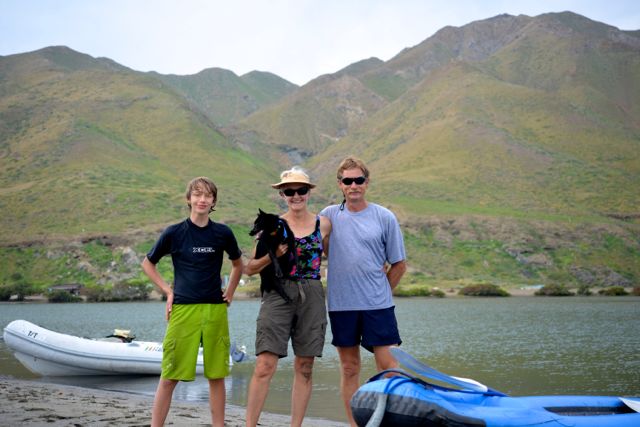 |
Our 2nd stop during our passage south from San Diego to Cabo San Lucas with the 2012 Baja Ha Ha. (This is where Jim is June 20+ 2015)
56 Photos
Created 21 June 2015
|
|
Jim has prepped & is sailing/bashing our sailboat up the outer coast of Baja.
4 Photos
Created 19 June 2015
|
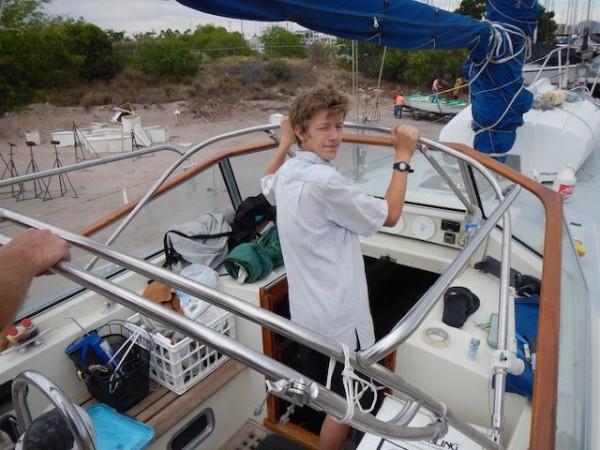 |
Boat painting continues while we pull the mainsail out of the boat and reattach it.
12 Photos
Created 5 April 2014
|
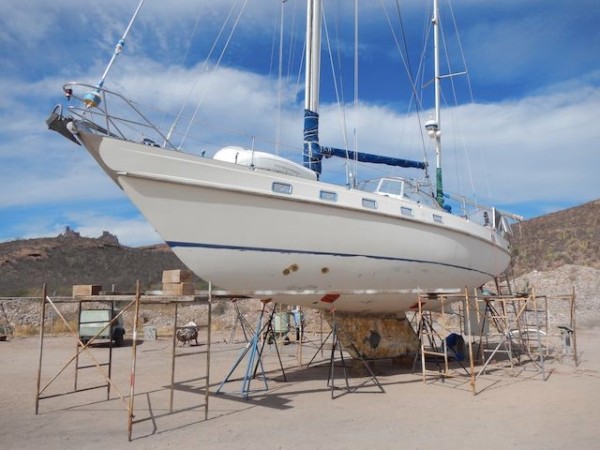 |
Beth and Glen join Jim over Glen's spring vacation in San Carlos, Mexico where the boat is hauled out for painting.
26 Photos
Created 3 April 2014
|
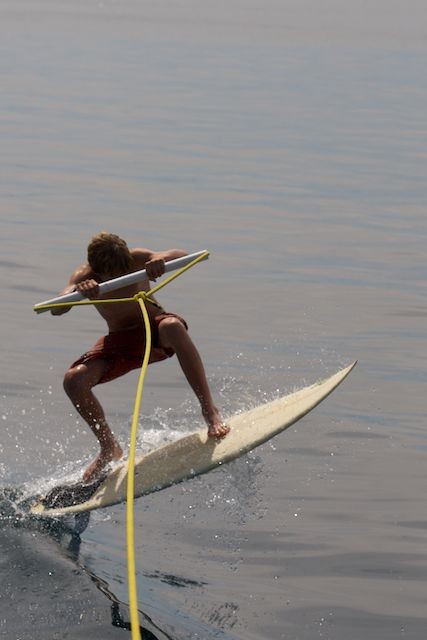 |
Glen surfs his new board by being towed behind our sailboat as we travel north in the Sea of Cortez.
9 Photos
Created 13 June 2013
|
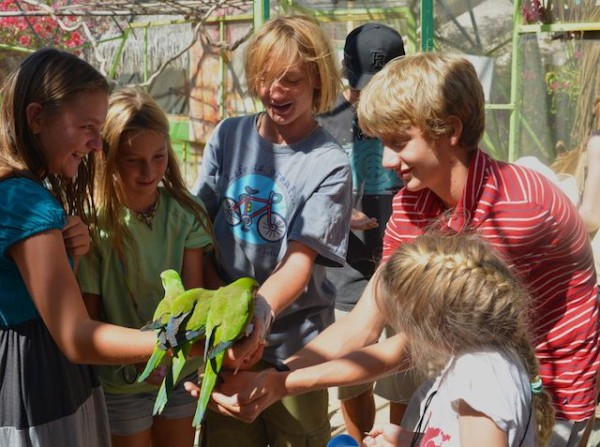 |
Nine of us from 5 family boats visited La Paz's Serpentarium. The highlight was the aviary, where we all got to feed birds that ate out of our hands.
41 Photos
Created 1 June 2013
|
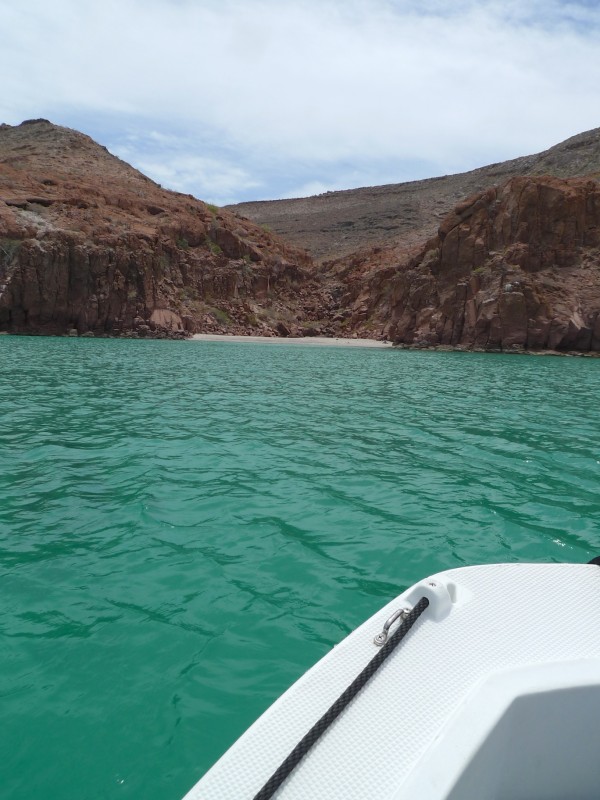 |
We loved getting close to the cactus and volcanic rock on this steep, rocky section above a white beach along the lower Sea of Cortez.
25 Photos
Created 24 May 2013
|
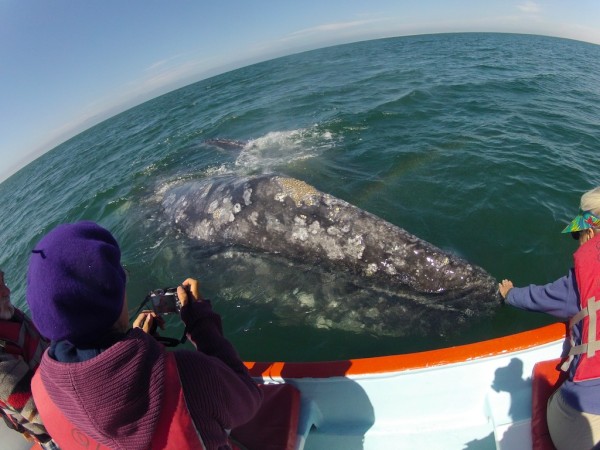 |
Several mother-calf pairs of gray whales interacted with our boat and us in San Ignacio Lagoon -- an amazing experience.
16 Photos
Created 5 May 2013
|
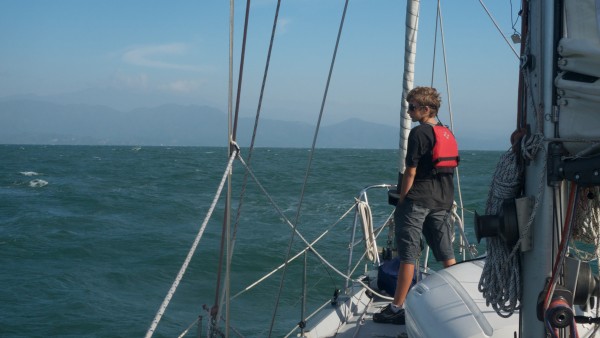 |
On our first day in San Blas we toured the town and ruins with fellow boaters from Lady Carolina
12 Photos
Created 25 February 2013
|
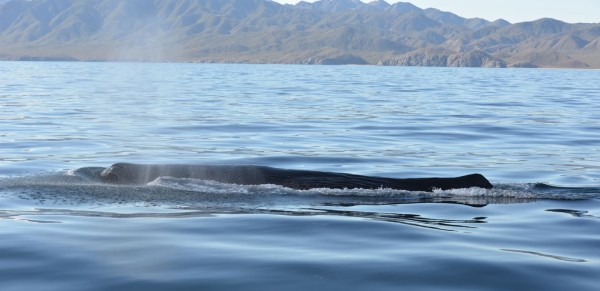 |
East of La Paz, in Cerralvo Channel, we encounter a lone, young sperm whale.
6 Photos
Created 26 January 2013
|
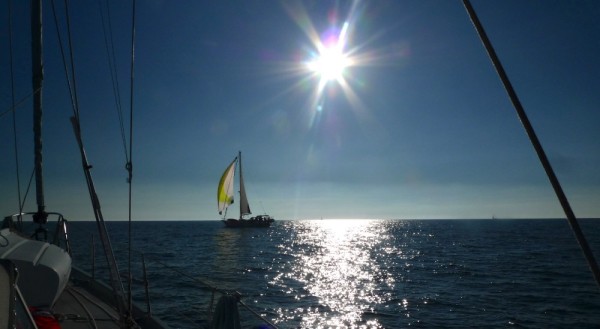 |
San Diego to Bahia de los Tortugas, including Glen's first tuna (under full sail) and our first overnight sailing.
35 Photos
Created 30 December 2012
|
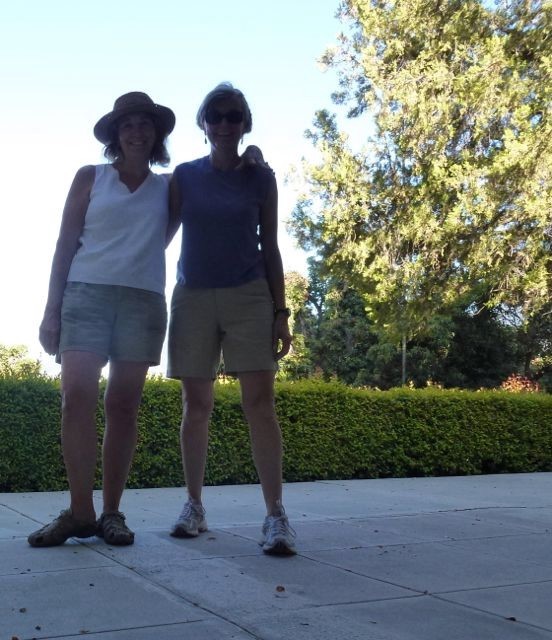 |
Glen and Beth move back to Alameda from Ojai; Glen attends Cazadero Music Camp; we decide to bail on maintaining teak cap rails and paint (!) them instead.
70 Photos
Created 19 December 2012
|
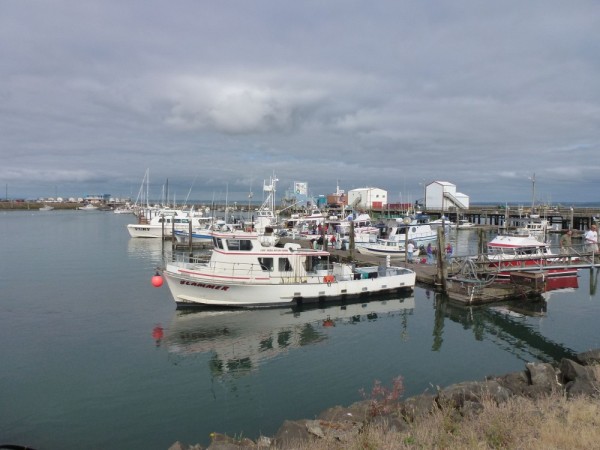 |
We are coastal hopping our way south, pausing to wait for very good weather and to experience small communities and people along the way.
16 Photos
Created 1 September 2011
|
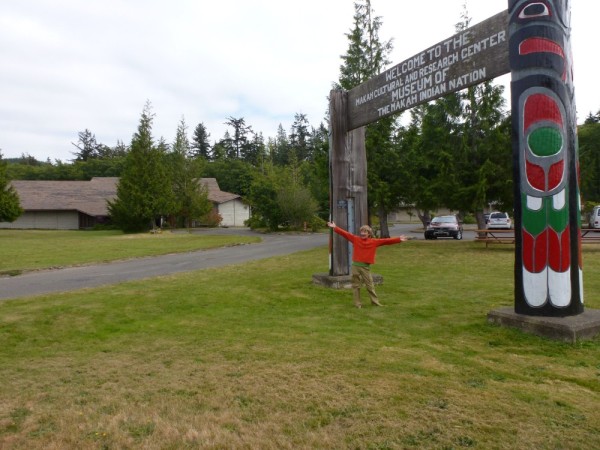 |
Still some essential projects to complete before heading out past Cape Flattery. Made time to visit the fantastic Makah Indian museum in Neah Bay.
9 Photos
Created 11 August 2011
|
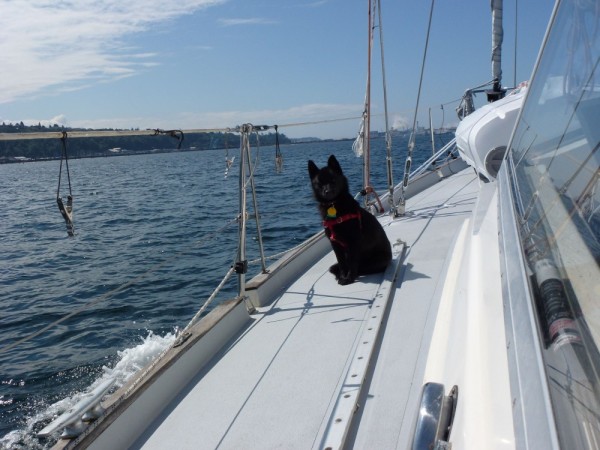 |
Last days in Port Townsend getting ready to start our offshore trip. First leg to Port Angeles; fogged out on Aug 7.
30 Photos
Created 8 August 2011
|
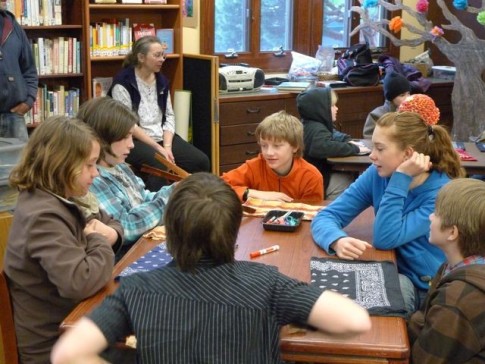 |
We launch our new main sail and discover 2 excellent, free, interactive educational web sites.
26 Photos
Created 29 April 2011
|
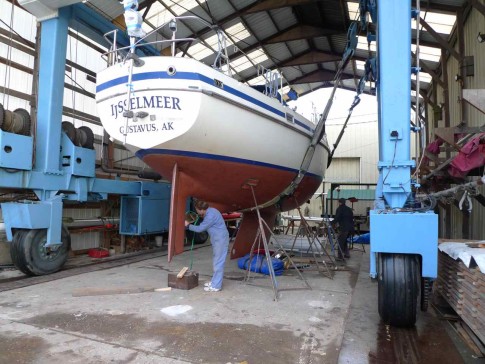 |
Ijsselmeer gets back in the water and is remasted. Christmas on board and with Nan and Ina.
6 Photos | 1 Sub-Album
Created 23 March 2011
|
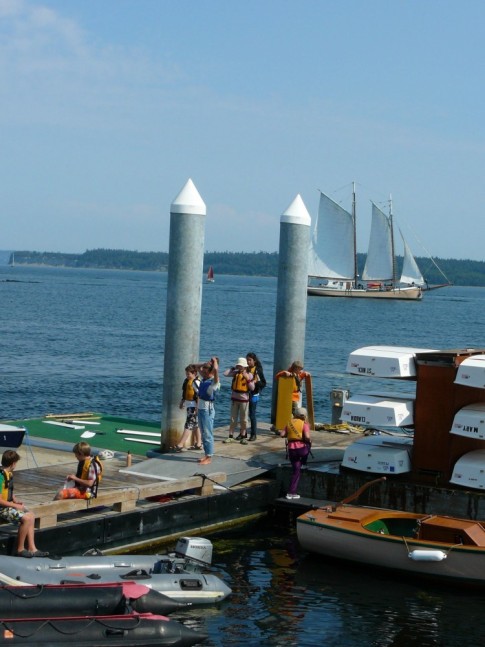 |
We started Ijsselmeer's re-rigging project with Brion Toss, Glen took a sailing class, and we all enjoyed PT's sunny summer.
14 Photos
Created 21 January 2011
|
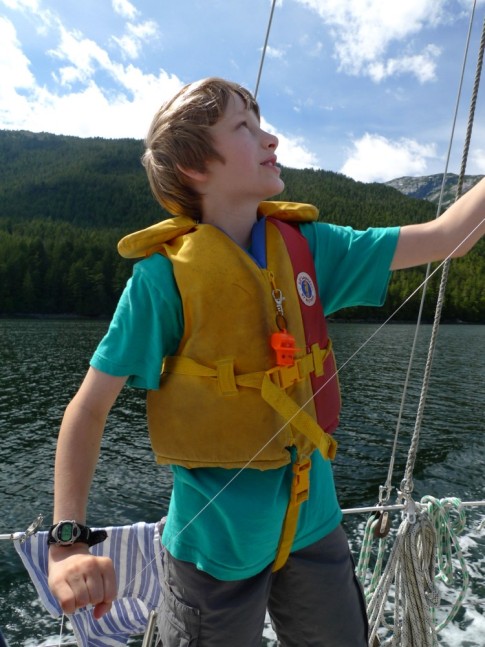 |
We had two beautiful days traveling down through the inside passage to an anchorage just south of Bella, Bella. Glen discovered kite-flying off the stern.
26 Photos
Created 29 July 2010
|
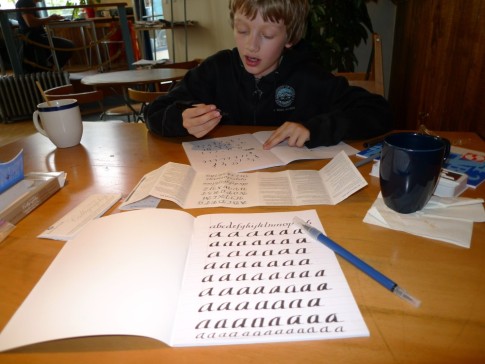 |
Jun 29-Jul 4: We spent a few extra days in Prince Rupert, British Columbia to do some work on Ijsselmeer, and we were also delayed by the weather.
7 Photos
Created 29 July 2010
|

